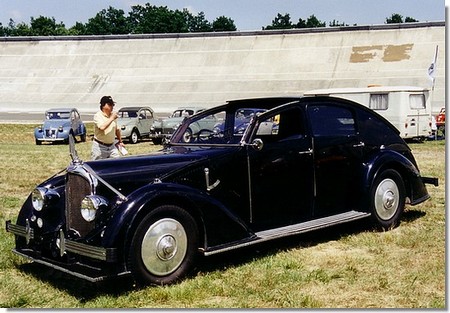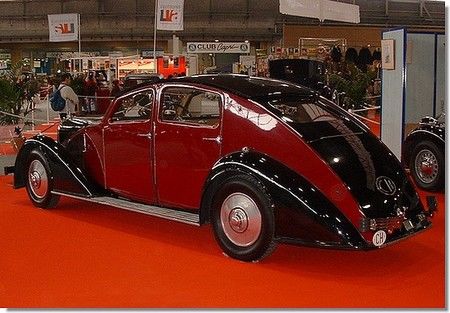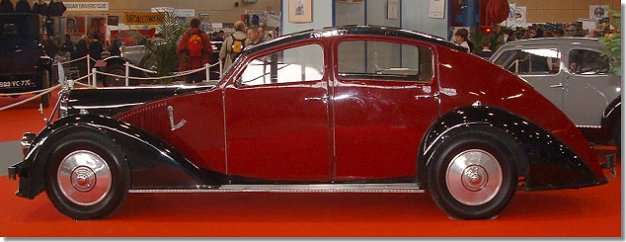|
|
|
C25 (1934-1935)
|
|
The term 'Aerodyne' was originally used to describe
any heavier-than-air flying machine.
|
|
 |
By 1933, the angular razor-edge geometric style that had come to characterise
Voisin factory coachwork was starting to look old-fashioed with the advent
of the vogue for more streamlined forms. Despite the company's parlous financial state, Voisin prevailed upon
the company's administrators to allow him to create a new model that was
more in line with current tastes. Developed in very little time and with precious few resources, the C25
was the result. The first prototype
saw the light of day in summer 1934; a second (substantially different)
prototype was shown at the Paris Salon in October of the same year.
|
|
The frontal aspect, although equipped with enveloping wings, retained the traditional vertical Voisin radiator. The car's visual impact was accentuated by a striking red and white paint scheme, with the white extending to the inner surfaces of the front wings as well as the bootlid. The production C25 gained an extra 25mm in wheelbase, an exceptionally well-stocked dashboard, the famous 'foot baths', two front bucket seats and a folding bench seat for three at the rear. The airiness of the interior was enhanced by the complete absence of the upper screen rail with the roof retracted. |
 |
|
The engine was the same 17CV six-cylinder that first appeared on the C24, its 90 bhp sufficient for a 130 kph maximum speed. For more conservative clients, Voisin also offered the C25 in more sober Cimier guise, with a conventional boot and no sliding roof (although the other detailing remained the same, such as the patented door locking mechanism and sidelights. |
|
|
Some 30 examples of the C25 were produced in 1934 and
1935.
|
|
 |
|
|
The Aérodyne profile, a plane wing shape...Voisin, of course
|
|
|
|